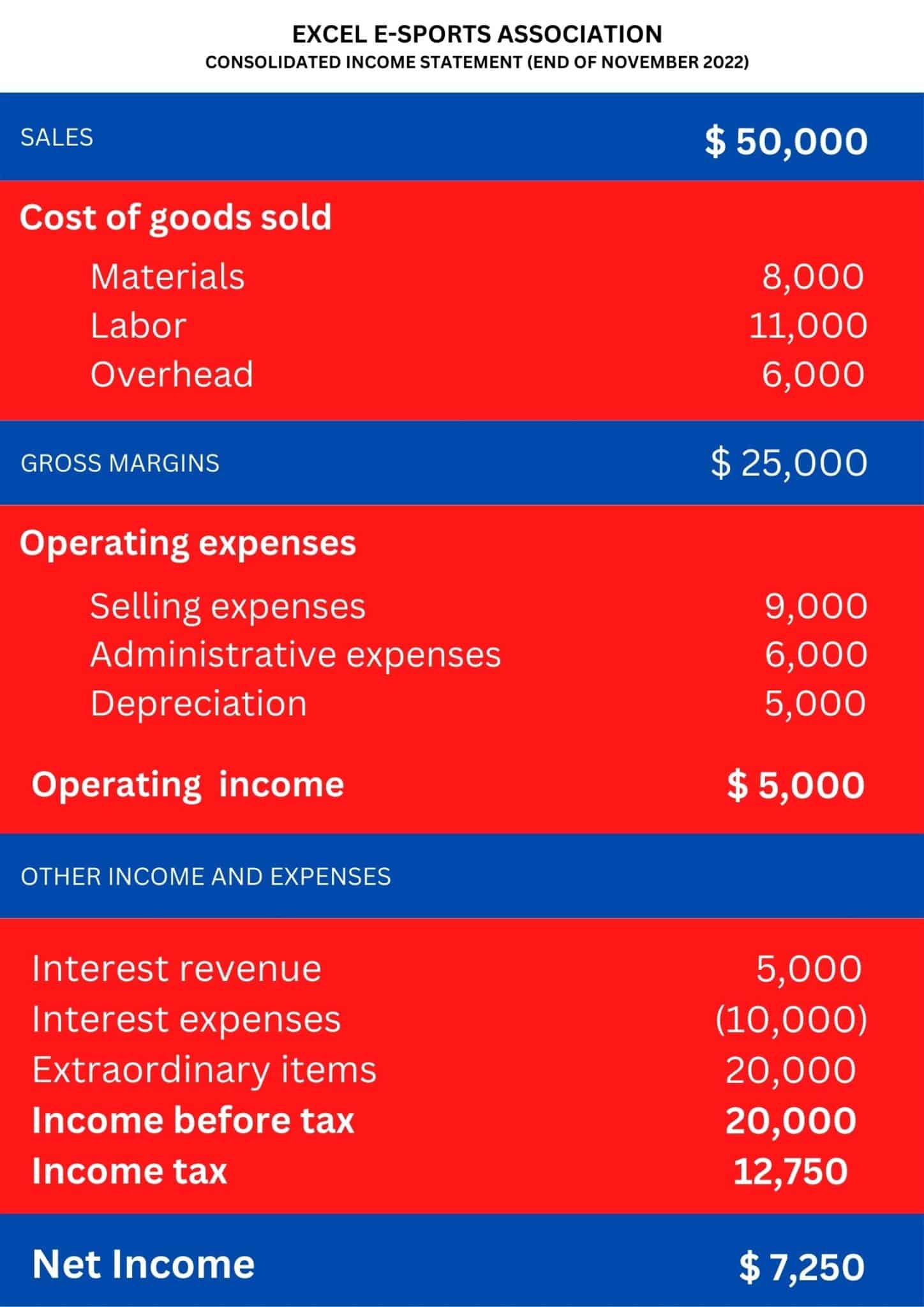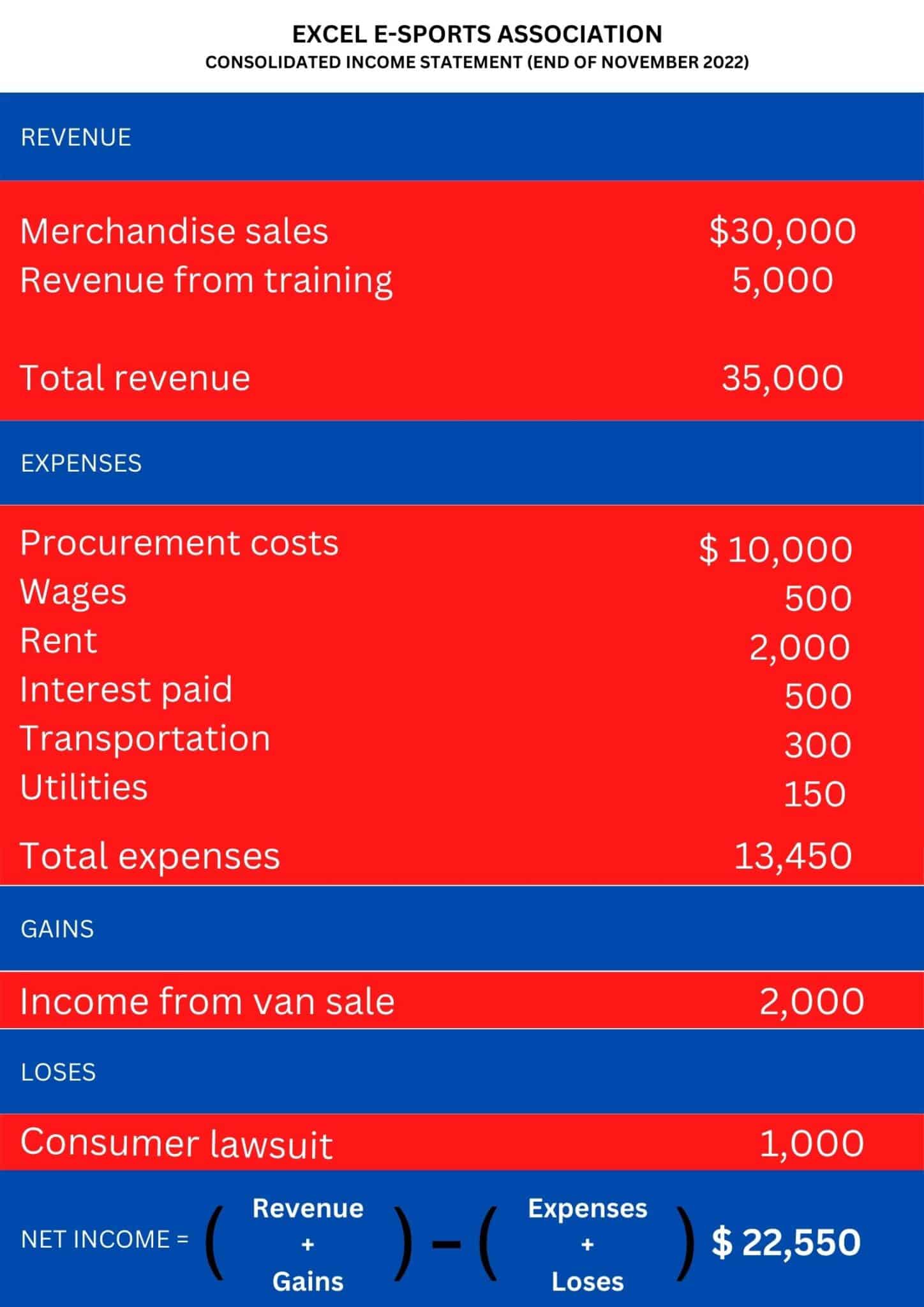A company must have an income statement so that it can track its financial status and make informed decisions. The company’s gains, losses, gains, and expenses are all detailed on the income statement, which you can use to solve a mathematical equation to determine whether or not the company is making a net profit or loss for the period.
This information helps you to make timely decisions to determine whether your business has a solid financial footing.
In addition, the company’s income statement can measure the success of the company’s operations over a certain period. However, the company’s financial activities, such as managing income statements manually, will undoubtedly take a lot of time and require accuracy.
Accounting Software from HashMicro can be the solution. This software can automate the company’s financial activities accurately and in real time.
Also read: Learn How to Prepare a Cash Flow Statement for Your Business
Table of Content:
Table of Content

Income Statement Meaning
The income statement is a financial statement that details the company’s revenues and expenses and indicates whether a business is making a profit or loss within a given period. In addition to the balance sheet and cash flow statement, the income statement provides insight into a corporation’s financial health.
he term “income statement” is also known as the profit and loss statement, statement of operations, statement of financial result or income, or earnings statement.
Income Statement Importance
An income statement assists business owners in determining whether growing revenues may yield a profit, decreasing costs, or both. It also shows the effectiveness of the business’s strategies at the start of an accounting period.
Business owners can consult this document to determine if the plans have paid off. Based on their analysis, they can develop the best solutions to yield more profit.
The following are a few more details that a statement of income provides:
Frequent reports
While other financial statements are issued annually, the income statement is created quarterly or monthly. This helps business owners and investors to monitor company performance. The company’s performance closely and makes educated decisions. This also allows them to identify and resolve minor business issues before they become significant and costly.
Identifying expenses
These financial statements identify the company’s upcoming spending, unanticipated expenditures, and any areas that are above or under budget. The costs include building rent, payroll, and other overhead charges.
As a small business begins to expand, its expenses may skyrocket. These costs may include employing employees, purchasing materials, and promoting the business.
Comprehensive overview of the business
This statement provides prospective investors with an overview of the company in which they intend to participate. Banks and other financial organizations can also analyze this document to determine whether the company is loan-worthy.
Revenue and Gains
The following are included in the income statement, albeit its structure may vary depending on local regulatory requirements, the scale of the business, and the operating activities associated with it:
Operating income
Operating revenue is sometimes referred to as revenue generated from primary activities. For a corporation that manufactures a product or wholesaler, distributor, or retailer engaged in selling that product, income from main activities refers to revenue generated from the product’s sale.
Similarly, for a corporation (or its franchisees) engaged in providing services, revenue from primary activities refers to the income or fees generated in exchange for these services.
Non-operating Income
Recurring revenue is frequently used to describe revenue generated by ancillary, non-core company activity. This income comes from sources other than buying and selling goods and services. Examples include:
- Interest income on business capital held in a bank,
- Rental income from real estate owned by the business,
- Revenue from joint ventures like royalty payment receipts or
- Income from an advertisement displayed on real estate owned by the company.
Gains
Also known as other income, gains represent the net amount of money gained from activities such as selling long-term assets. These include the net income realized from nonbusiness operations such as selling a company’s old van, underused land, or subsidiary company.
Revenue and receipts should not be mixed. Typically, payment is recorded in the period when sales are made or services are rendered. Cash received is represented by tickets, which are recorded when the money is received.
For example, if a consumer receives goods or services from a business on November 28, the revenue will be recorded for November. Due to his solid reputation, the client may be granted a 30-day payment period. He will have until December 28 to make the payment when the receipts are recorded.
Also read: A Simple Guide to Understanding Profit and Loss Statements
Expenses and Losses
Expenses are the costs incurred by a business to sustain operations and generate a profit. If they comply with Internal Revenue Service (IRS) rules, some expenses may be deducted from a tax return.
Primary activity costs
These costs are incurred to generate the typical operating revenue associated with the core company activity. They consist of the cost of goods sold (COGS), selling, general and administrative (SG&A), depreciation or amortization, and research and development (R&D) costs. Typical items on the list include employee salary, sales commissions, and expenses for power, transportation, and other utilities.
The Structure of Income Statement
Some information is included in the structure of the income statement. The structure of this document may vary depending on regulatory requirements, different business needs, and other operating activities. Below, six sections are generally found in the income statement structure:
Revenue or sales
This is the first part of the income statement, which summarizes the total gross income the business generates. Revenue can be classified into two categories: active and inactive.
Operating profit is a company’s revenue generated by core business activities such as producing products or providing services. Non-operating income is generated by non-core business activities such as system installation, maintenance, or operation.
Cost of Goods Sold (COGS):
It is the total cost of selling the goods or services, also known as the costs incurred to produce the goods or services. Remember that it only covers the cost of the product you are selling. The cost of goods sold usually does not include indirect costs, such as overhead costs.
Gross profit
Gross profit is usually defined as net sales minus the total cost of sales in your business. Net income is the total money you get from the goods sold, while COGS is the amount you spend to produce the goods.
-Gains:
Gain results from a favorable event that increases an organization’s income. Gains represent the amount of money a firm realizes through various business actions, such as selling an operational sector.
Similarly, the profits from one-time nonbusiness activities are also considered company gains. For instance, a firm may dispose of obsolete vehicles or underused land. Although the gain occasionally serves as a secondary form of revenue, the two concepts are distinct.
However, you can also recognize and use gain for the sale of assets, which is a rare occurrence for a firm. Revenue is money that a business receives regularly.
Expenses
Expenses are the costs that a business has to pay in order to generate income. Equipment depreciation, employee salaries, and payments to suppliers are examples of regular expenses.
There are primarily two major business expense categories: operating and non-operating expenses. Operating expenses are the costs that are a direct result of a company’s core business operations or activities. Meanwhile, non-operating expenses are not directly related to the company’s core business activities.
Sales commissions, pension payments, and wages are examples of operating expenses, whereas non-operating expenses include charges for obsolete inventory and lawsuit settlements.
Net income
Net profit is the amount of money earned after deducting allowable company expenses. It is determined by deducting all expenses from total revenues. Gross profit is the amount of money a firm earns after subtracting the cost of items sold from its net income.
Also read: The Importance of Consolidated Financial Statements for Your Company!
How To Read Income Statements
Let’s examine an illustration to comprehend an income statement of revenue. Here is the income statement for a new local E-sports association for the second quarter of this year.
Single-step income statement
According to the preceding example, the association received $30,000 from selling goods and $5,000 from training fees. The association incurred $13,450 in expenditures for its various operations.
They received $2,000 from the sale of an old van but will incur a loss of $1,000 from the settlement of a pending consumer lawsuit. Now, to compute the net income, insert the following values into the equation:
One of the simplest ways to calculate net income is to enter the values of revenue, expenses, gains, and losses into an equation. This type of income statement is known as a single-step income statement because it is based on a simple computation rather than more complex calculations.
Multi-step income statement

Therefore, larger companies opt for multi-step income statements. This approach separates operating revenues, operating expenses, and gains from non-operating expenses, non-operating revenues, and non-operating profits.
Four degrees of profitability are represented: gross, operating, pre-tax, and post-tax. The following example utilizes the same firm data as the income statement with a single step.
Conclusion
An income statement is one of the things that can help you to see the good or bad financial condition of your business. Rich information on the key factors responsible for profitability. Also, it can provide timely updates for your business as it can be generated much more frequently than other statements. Companies need to consider Accounting Software to help the company’s financial activities.
Accounting Software from HashMicro can be the solution. With this software, you can help your company to manage income statements and other financial activities such as cash flow management, reconciliation, and automated journal entries in real-time.
To make the economic activities in your company more efficient. You can first look at the pricing scheme to determine the estimated Hash Accounting Software. Contact us for further information and get a free demo.





































